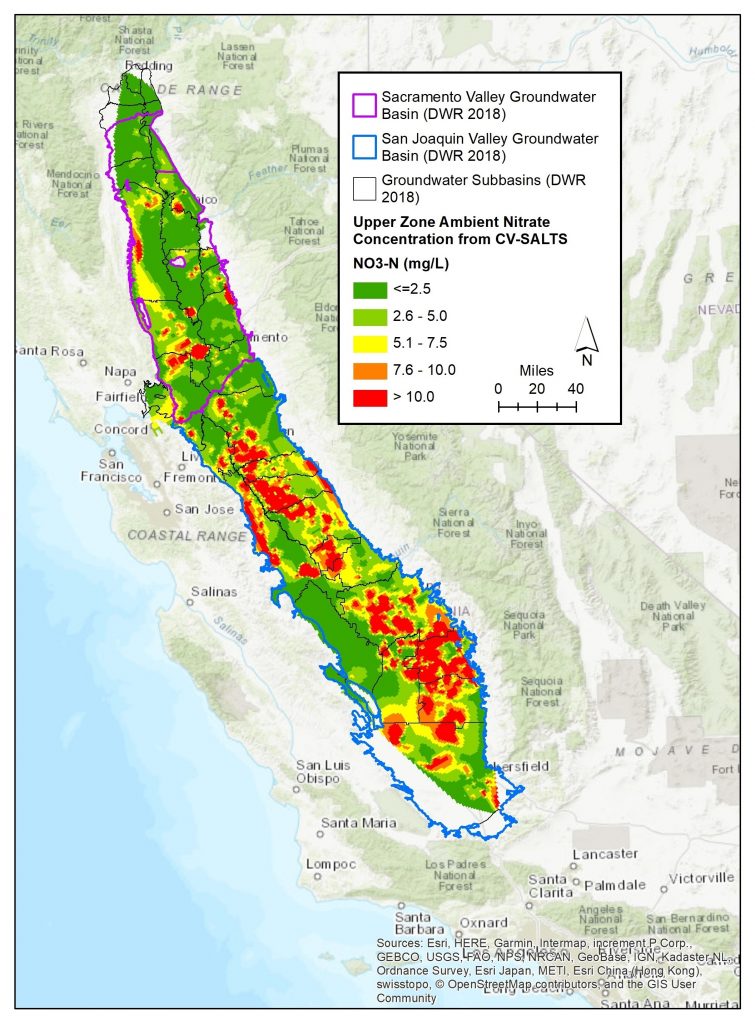By Vicki Kretsinger Grabert, President and Senior Principal Hydrologist
Luhdorff and Scalmanini, Consulting Engineers, Woodland
Understanding the status of California’s surface water and groundwater availability and sustainability are key goals of many programs. Sacramento Valley’s water resources managers and communities are proactively and collaboratively engaged in identifying and implementing strategies that support water resources sustainability. This includes protecting groundwater quality for multiple beneficial uses, which is being addressed through the following programs:
- Decadal engagement in the Central Valley Salinity Alternatives for Long-Term Sustainability (CV-SALTS), which has developed Basin Plan Amendments (BPA) for Salt and Nitrate Control for the entire Central Valley. The BPA is a way for the Regional Water Quality Control Board and dischargers to collectively address a range of water resources challenges, including ensuring high quality groundwater or addressing the imbalance of salt and nitrate that has already impaired, or may in the future impair, groundwater quality in some parts of the Central Valley.
- Numerous groups, including the Sacramento Valley Subwatershed Groups, growers and agricultural communities, are also implementing actions required by the Irrigated Lands Regulatory Program (ILRP) to monitor, characterize, track trends, and protect groundwater quality.
- Water managers and countless other stakeholders are working to protect the sustainability of both the quantity and quality of water resources under the Sustainable Groundwater Management Act (SGMA).
- Governor Newsom’s recent Executive Order directed his state agencies to inventory and assess the existing water quality of our aquifers, rivers, lakes and beaches.
Together, these programs will contribute to better characterization of groundwater quality and other information that will support the local efforts in the Sacramento Valley to protect groundwater quality–both now and for the future.
Climate resiliency and the ongoing importance of implementing comprehensive water management strategies for multiple benefits specifically requires attention to salt and nitrate management to maintain high quality groundwater, or to improve groundwater quality where necessary, so the health and beauty of the Sacramento Valley watersheds are safeguarded for present and future generations.
Salt and nitrate management practices necessitate consideration of water movement across and beneath the landscape. The transport of salt and nitrate relative to water volumes becomes critical for sustaining high quality groundwater or improving impaired groundwater. Water balance components such as groundwater recharge, surface water/groundwater interaction (streamflow recharging groundwater or groundwater contributing flow to streams), horizontal movement of groundwater from one area to another, vertical movement of shallow groundwater downward toward deeper aquifer units, groundwater pumping, and groundwater storage all play pivotal roles in the movement and management of salt and nitrate.
As part of CV-SALTS work preceding the BPA, high resolution maps were prepared to illustrate nitrate and salt concentrations in the upper and lower parts of the groundwater system in the Central Valley. This mapping on the valley-wide scale showed that, in the Sacramento Valley, the upper zone of the groundwater system has very good quality with respect to nitrate concentrations, with the exception of some local areas shown in red. In the Sacramento Valley, the net volume of water available for recharge to groundwater, including from precipitation, infiltration from streams or surface water bodies, or applied to the land for irrigation, generally represents a large component of the water budget and has an overall positive effect on groundwater quality. Local effects may occur where land uses, or the applied water, contribute additional nitrate and salt compared to background water quality conditions. A few local areas warrant additional assessment to ensure that all communities have access to clean, safe, and affordable drinking water.

Integrated water quantity and quality management strategies, along with climate science and weather variability considerations, become increasingly critical for future sustainability and water resiliency planning. Understanding salt and nitrate sources and their relationship to natural or intentional recharge and identifying the factors that can affect the amount of recharge are important for managing groundwater resources related to the contribution of salt and nitrate from surface activities. Sacramento Valley’s Subwatershed Groups continue to create building blocks for groundwater quality sustainability by establishing an informative groundwater quality monitoring network, implementing projects like the Woodland-Davis Clean Water Agency, and local growers’ actions such as planting cover crops.
Current groundwater quality conditions in the Sacramento Valley watersheds are generally good with respect to nitrate and salt. We cannot, however, take this for granted. Future collaborative efforts to integrate water quantity and quality management strategies and continued attention to and investments in innovative land use management practices and technologies will advance planning for climate resiliency and provide for maintaining or improving groundwater quality.
For more information on the Sacramento Valley’s comprehensive approach to ensuring safe drinking water for all communities, see here.




The water is very important in feature. so drinking water less then use in our country. because water is very kindly safe usage in feature.